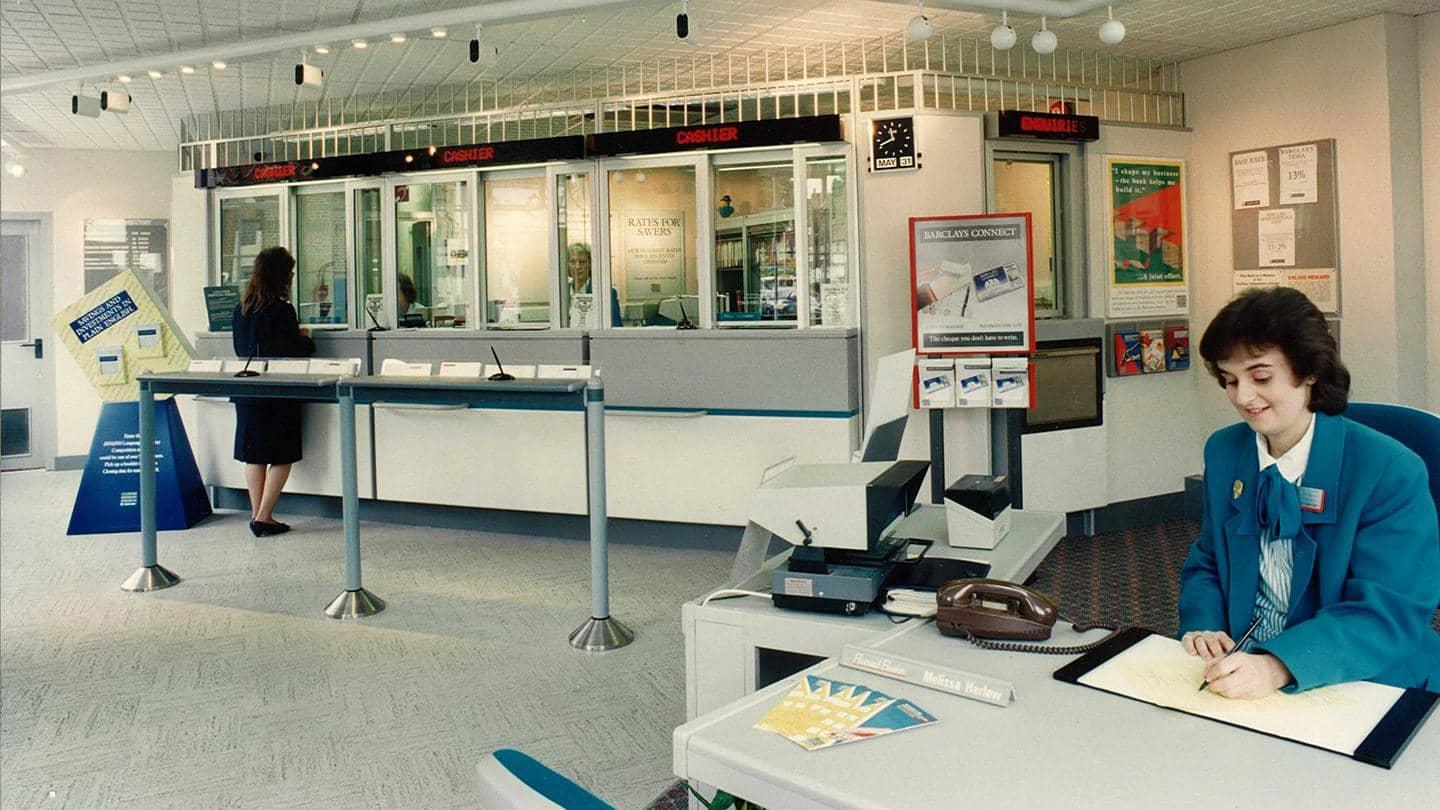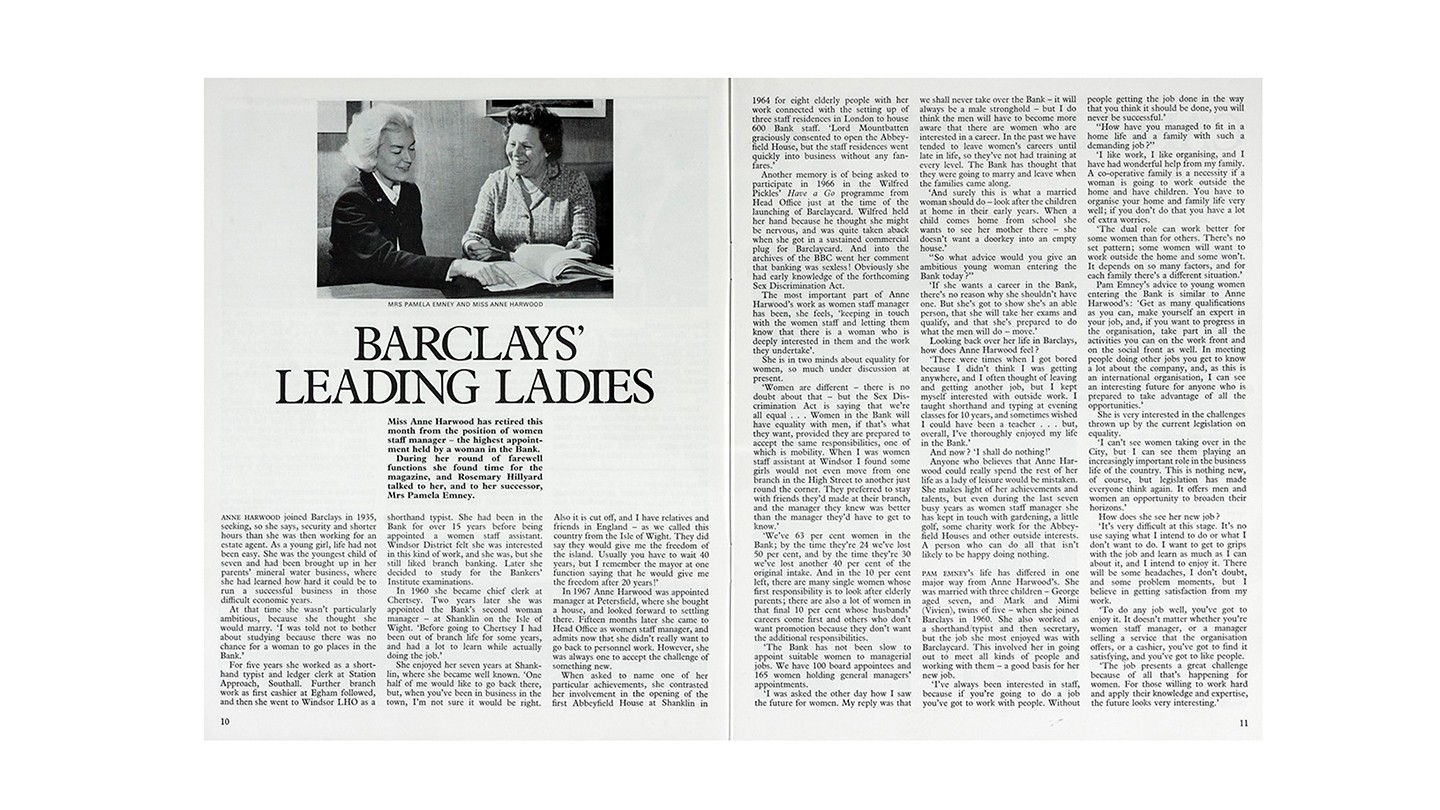
History
Hidden Histories: the women who pioneered personal banking
Female colleagues have long been central to innovation within Barclays. In the third in our series celebrating Women’s History Month, we look at the introduction of personal bankers in the 1970s and the success of the scheme, which consisted of an all-woman team.
During the 1970s, an increasing number of customers joined Barclays and the bank’s workforce expanded accordingly. Over the 30 years that followed, staff numbers grew by more than 53,000, with women accounting for half that expansion.
An all-woman team
To meet the growing demand – and relieve branch staff from mounting responsibilities – Barclays rolled out a new Personal Banking scheme in 1977. The people who took on the new roles were all women.
Personal Bankers were trained to take on some of the responsibilities previously assigned to managers. A pilot scheme which launched in six branches across the UK – Wellingborough, Hanley, Leamington Spa, Worthing, Hove and Eastbourne – was deemed successful, and expanded to 30 branches shortly after.
In each branch, around three women were appointed to the role, which saw them answering customer queries and directing them to the best place to seek help.
“For the very first time branch staff were not just behind the counter, they were in the banking hall – much more accessible to the bank’s customers,” says Maria Sienkiewicz, Barclays Group Archivist.
“However, it was quickly realised that as branch staff wore their own clothes, they weren’t necessarily easily identifiable, they could just look like other customers. So, it was decided to put them into distinctive uniforms, thereby enabling customers to easily identify them.”

A personal touch
An article published in Barclays News in May 1978 titled “Public favours that personal touch” announced the new Personal Banking scheme to the public. Pam Horsfield, then Barclays Personal Banker in the Wellingborough branch, was pictured offering advice to a customer of the bank at a desk in the banking hall.
As well as freeing up managers to deal with business customers and enhancing customer service, the scheme offered Barclays’ female employees an opportunity to improve their skills. By the early 1980s, all branches began to adopt the scheme.
Barclays’ leading women
Another significant moment for the bank in the 1970s was the retirement of Anne Harwood, the second female branch manager. Incredibly, early in her career at the bank, Harwood was told by a male colleague that the day a woman became branch manager, the Barclays Spread Eagle would flap its wings and fly away. Harwood’s 41-year career with the bank proved her colleague wrong.
In an interview with the Barclays staff magazine Spread Eagle, Harwood advised women in banking and finance that hard work was necessary to build a career: “If she wants a career in the Bank, there’s no reason why she shouldn’t have one. But she’s got to show she’s an able person, that she will take her exams and qualify, and that she’s prepared to do what the men will do – move.”
Harwood’s successor at the bank, Pamela Emney, reinforced her message: “The job presents a great challenge because of all that’s happening for women. For those willing to work hard and apply their knowledge and expertise, the future looks very interesting.”

Barclays’ second female branch manager Anne Harwood features in the bank’s staff magazine The Spread Eagle.